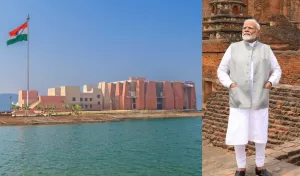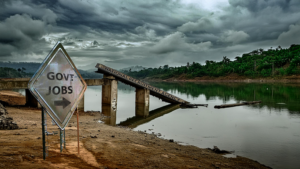Introduction
Pakistan is one of the 52 countries facing severe debt crisis. The most critical problem faced by the country’s economy is repayment and servicing of external debt. Persistent borrowing creates a spiral with more borrowing generating an impending economic crisis. The empirical evidence overwhelmingly supports the view that a large portion of the government debt has negative impact on economic growth potential, and in many cases the impact gets more pronounced as debt increases.
The high degree of indebtedness has made Pakistan more vulnerable to economic shocks and weakened the country politically vis-a-vis powerful external lenders. It has also greatly reduced Pakistan’s ability to invest in education and healthcare. The picture looks dismal when we take a glance at the human development index where Pakistan’s rank (154) is worse than that of India (131), Bangladesh (133), and Sri Lanka (72).
Current economic and fiscal situation
With two years of Covid-19 crisis, the Pakistan economy is in the woods, marked with rising debt stock, higher inflation, large scale unemployment.
- External debt has swelled to $ 119.8 billion. Debt servicing devouring all other resources. In 1970, our total external debt stood at $3.5 billion. In 2018, it was $93 billion. In 2021, our external debt exceeds $119 billion.
- Debt servicing: In 1970, our total payment on account of the external debt was at $256 million. In 2018, we paid $6 billion. In 2020 debt payments on external debt exceeds $12 billion.
- Debt to Revenue ratio: In 2017, a mere four years ago, Pakistan’s total debt payment amounted to 39% of FBR taxes. Today, our total debt payment consumes 75% of FBR taxes.
- Debt-to-GDP ratio increased from 76% in 2018 to 90% currently. While the Debt to GNI Ratio was 1.4% in 2011, in 2018, we paid 1.9% of our GNI in debt servicing and currently over 4% of GNI towards debt servicing.
- Debt to export ratio: In 2011, a mere 10 years ago, our debt servicing as a percentage of our exports was 9%. In 2018, we paid 19% of our exports in debt servicing. In 2021 we pay over 35% of exports towards our debt servicing.
Under these circumstance Pakistan is projected to allocate $ 27.8 billion to meet external debt service payments between September 2020 and June 2023. This figure includes payments for $ 19.4 billion to the IMF, the World Bank, ADB and China.
Impacts of the Pandemic
- Budget cuts: The government is imposing budget cuts, withdrawing subsidies including for food, fertilisers and fuel; wage bill cuts and caps precisely at a time when people are in greater need of public support. The average expenditure contraction in 2021 is projected at 3.3% of GDP.
- Social Protection: Due to rationalisation and narrow-targeting of social protection program the poorest population receive smaller and smaller benefits, while most people are excluded. Out of 80 million only 1.5 million people have been able to benefit.
- Public services are likely to be downsized and/or privatised, including health, while labour regulations may be dismantled.
- Poverty: As many as 10 million Pakistanis have been pushed into poverty. 46% of population (over 80 million) was already below poverty line, which is likely to increase by 5-6% due to adverse impacts of pandemic.
- Increasing debt burden: The crisis is marked by Pakistan’s increasing debt burden and it is compelled to meet debt service requirements at a great human and social cost. For now, gone are the concerns about how to “pay for” it all. Instead we are seeing wartime levels of spending, driving deficits and public debt — to new highs. Working classes have been forced to bear the effect of this mounting debt burden through indirect taxation, as a result.
DSSI and the G20 Common Framework
Despite Pakistan PM’s appeals to the international community for a comprehensive debt relief, Pakistan obtained temporary debt relief worth $1.8 billion from the members of G-20 nations. This included $1.47 billion principal loans repayments and $323 million interest on the loans. This is nothing but a drop in the ocean and a temporary relief. In spite of all the parties – including the G20-WB-IMF – agreeing that the DSSI is insufficient and inappropriate, the lenders stubbornly persist with it. It is important to remember that the measure is conditional with an agreement with the IMF, which is definitely not worth the trouble. On the other hand, rating agencies have escalated the threat of downgrading the sovereign rating of countries using Debt Service Suspension Initiative.
Is sovereign debt workout mechanism workable?
Comprehensive sovereign debt relief must follow the initial debt suspension phase following the structure of the assistance offered by the international community to Germany in 1953. We demand a suspension of debt repayments and a cancellation of the debt since Pakistan is no longer in a position to repay its loans. This demand has a legitimate legal arguments based on international law, which calls for debt payments suspension on the grounds of necessity and fundamental change of circumstances.
Independent debt audits must be considered as an integral component of comprehensive sovereign debt work out mechanism. Audits should take place at the national level and should be responsible for the assessment of the legality of all the previous loans. The results of the debt audits would then inform the process of cancelling illegitimate and odious debts.
The rich nations should fulfil 0.7% of their Official Development Assistance commitments and mobilise the required $1.5 trillion annual investment in sustainable infrastructure.
Massive illicit financial outflows from developing countries to rich countries, to offshore tax havens should be stopped. Without urgent and significant debt relief from all creditors, coupled with local actions such as a public debt audit and a massive reduction in non-development expenditures, it will be hard for Pakistan to avoid a default.
[Abdul Khaliq is with CADTM Pakistan. Courtesy: Committee for the Abolition of Illegitimate Debt (CADTM).]




